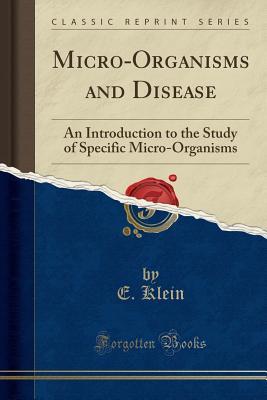Read Micro-Organisms and Disease: An Introduction to the Study of Specific Micro-Organisms - E. Klein | PDF
Related searches:
Microbes and disease Microbes and the human body
Micro-Organisms and Disease: An Introduction to the Study of Specific Micro-Organisms
Micro-organisms and Disease: An Introduction Into the Study
Micro-Organisms And Disease - An Introduction Into The Study
Micro-organisms and disease - Micro-organisms and disease
Diseases and Organisms in Healthcare Settings HAI CDC
Understanding Microbes in Sickness and Health - IUPUI ScholarWorks
Pathogens and Other Microorganisms - USGS
Microbes and Diseases- Explore Diseases Caused by Microorganisms
Microbes and Diseases - Diseases Caused By Microorganisms and
Details - Micro-organisms and disease : an introduction into
Role of microbes in human health and disease
Infectious diseases - Symptoms and causes - Mayo Clinic
Micro-organisms and disease Teaching Resources
I want to start making robots using micro controllers, and i want to know how to use tham, where to buy everything you need for them, and how they hook up and everything in that nature.
Even smaller than bacteria, viruses cause a multitude of diseases ranging from the common cold to aids. Many skin diseases, such as ringworm and athlete's foot, are caused by fungi. Other types of fungi can infect your lungs or nervous system.
Most microbes belong to one of four major groups: bacteria, viruses, fungi, or protozoa.
Microorganisms [microbes] include bacteria, fungi, protozoa, some algae, viruses, viroids and also prions that are proteinacious infectious agents. Viruses reproduce only inside the cells of the host organism, which may be a bacterium, plant or animal.
Ebola (ebola virus) flu (orthomyxovirus) graduation 2021 class of covid.
Micro-organisms and disease: an introduction into the study of specific micro-organisms item preview remove-circle share or embed this item.
As wal-mart and its ilk go natural, true believers are grumbling. An award-winning team of journalists, designers, and videographers who tell brand stories through fast company's distinctive lens what’s next.
Technically a microorganism or microbe is an organism that is microscopic.
There is also strong evidence that microbes may contribute to many non–infectious chronic diseases such as some forms of cancer and coronary heart disease. Different diseases are caused by different types of micro-organisms.
The center for biomedical informatics and information technology (cbiit) mission is supported by several branches, programs, and offices. The center for biomedical informatics and information technology (cbiit) mission is supported by the:.
Microbes and diseases microbes are better known as microorganisms that are very tiny to be seen through naked eyes. The microbes that are harmful and capable of producing microorganism diseases also termed as pathogens. But not all the microbes are harmful and they do not cause microbial infection.
Micro-organisms and disease� an introduction into the study of specific micro-organisms� related titles.
• microbes cause disease in the course of stealing space, nutrients, and/or living tissue from.
There is a mighty but invisible kingdom of microbes present within your body. Small yet incredibly powerful, these thousands of species and trillions of inhabitants live in all parts of your body and make up the diverse human microbiome. These microbiomes support and maintain your health but also, when the microbiome is disturbed in some fashion, have been linked to hundreds of ailments such as cancers, and autoimmune and cardiovascular diseases.
Microorganisms can be, according to their characteristics, divided into several groups: bacteria, viruses, certain fungi and parasites pathogenic (capable of causing disease), non-pathogenic, and opportunistic (causing disease when they have an opportunity, like in people with low immune system).
The usgs works to monitor and assess how disease-causing pathogens enter our water and help those who manage drinking and wastewater facilities prevent.
Most microbes belong to four major groups: bacteria, viruses, protozoa or fungi. (to find out more, see the “bacteria/viruses/protozoa” fact sheets). Disease-causing microbes can also be called pathogens, germs or bugs and are responsible for causing infectious diseases.
Scientists now think that a diversity of microorganisms inside of us help us resist many diseases.
Any micro-organism that is capable of causing disease is called a ‘pathogen’. Therefore disease producing organisms are said to be pathogenic. It is these micro-organisms that we want to kill or protect ourselves from.
Bacillus anthracis, which causes the disease known as anthrax, is a gram-positive sporulating bacteria that gets its name from the distinct coal-like, black tissue that is shed from a skin infection (anthrakis is greek for coal). It’s primarily associated with infections of grazing animals — spores can persist in the soil for decades.
This new part of the economy–people using collaborative consumption platforms to become entrepreneurs–is growing. What is inspiring these new business people? an award-winning team of journalists, designers, and videographers who tell brand.
May 16, 2016 humans typically associate microbes with disease. Most of our human microbiome, however, is neutral or even beneficial.
Learn how to get started organizing, storing and decluttering your life with free tutorials, diy projects, checklists and calendars.
Start the new year right with these organizational tips and products country living editors select each product featured.
Klebsiella [kleb–see–ell–uh] is a type of gram-negative bacteria that can cause healthcare-associated infections including pneumonia, bloodstream infections, wound or surgical site infections, and meningitis. Increasingly, klebsiella bacteria have developed antimicrobial resistance, most recently to the class of antibiotics known as carbapenems.
The diseases causing microorganisms include bacteria, viruses, protozoa, fungi and a few variations of worms. Once they invade the host cell, they disrupt or damage the normal cellular activities.
All living organisms in the world can be classified as either an autotroph or heterotroph. An autotroph is an organism that can make its own food for energy.
May 10, 2014 nature is an attractive source of new therapeutic candidates as a tremendous chemical diversity is found in millions of species of plants,.

Post Your Comments: